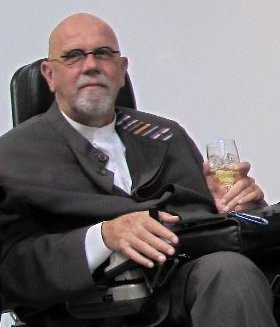
“You know, the way art history is taught, often theres nothing that tells you why the painting is great. The description of a lousy painting and the description of a great painting will very much sound the same.”
Share this quote:
“Sculpture occupies real space like we do... you walk around it and relate to it almost as another person or another object.”
Share this quote:
“Very few people have written about what a work really looks like, especially once there were photographic reproductions of works and so they felt that the photograph would carry the information, and, of course, it does a piss poor job of letting someone know of the scale of the work and of the physicality and how thick the paint was and what the touch was.”
Share this quote:
“I love what used to be called womens work. When women make quilts or something like that, it was something they could pick up or put down, and go back to after they start dinner or weed the garden or whatever... feed the baby. I like that. I liked knowing where I was going to be for a while.”
Share this quote:
“What difference does it make whether youre looking at a photograph or looking at a still life in front of you? You still have to look.”
Share this quote:
“At the same time that Im finding the color world I want, Im also trying to make the imagery, you know, by the nature of the strokes themselves.”
Share this quote:
“I think most paintings are a record of the decisions that the artist made. I just perhaps make them a little clearer than some people have.”
Share this quote:
“Ive said its a little bit like a magician performing for a convention of magicians... all the magicians in the audience watching this illusion-Do they see the illusion, or do they see the device that made the illusion? Probably they see a little of both.”
Share this quote:
“Europe often seems sort of overly concerned with the weight of history and stuff. We dont have much history here, so... .”
Share this quote:
“I tried to, with a series of self-imposed limitations, back myself into my own personal corner where nobody elses answers would fit. Ive always thought that problem-solving is highly overrated and that problem creation is far more interesting.”
Share this quote:
The advice I like to give young artists, or really anybody wholl listen to me, is not to wait around for inspiration. Inspiration is for amateurs; the rest of us just show up and get to work. If you wait around for the clouds to part and a bolt of lightning to strike you in the brain, you are not going to make an awful lot of work. All the best ideas come out of the process; they come out of the work itself. Things occur to you. If youre sitting around trying to dream up a great art idea, you can sit there a long time before anything happens. But if you just get to work, something will occur to you and something else will occur to you and something else that you reject will push you in another direction. Inspiration is absolutely unnecessary and somehow deceptive. You feel like you need this great idea before you can get down to work, and I find thats almost never the case.
Share this quote:
Amateurs look for inspiration the rest of us just get up and go to work.
Share this quote:
Painting is the most magical of mediums. The transcendence is truly amazing to me every time I go to a museum and I see how somebody figured another way to rub colored dirt on a flat surface and make space where there is no space or make you think of a life experience.
Share this quote:
Sculpture occupies real space like we do... you walk around it and relate to it almost as another person or another object.
Share this quote:
Painting is a lie. Its the most magic of all media, the most transcendent. It makes space where there is no space.
Share this quote:
My mother was a piano teacher, my father an inventor. He invented the reflective paint they still use on airstrips. They had faith in my ambition, and I think that made all the difference.
Share this quote:
I knew from the age of five what I wanted to do. The one thing I could do was draw. I couldnt draw that much better than some of the other kids, but I cared more and I wanted it badly.
Share this quote:
I wanted to translate from one flat surface to another. In fact, my learning disabilities controlled a lot of things. I dont recognize faces, so Im sure its what drove me to portraits in the first place.
Share this quote:
Neurologically, Im a quadriplegic, so virtually everything about my work has been driven by my learning disabilities, which are quite severe, and my lack of facial recognition, which Im sure is what drove me to paint portraits in the first place.
Share this quote:
There are so many artists that are dyslexic or learning disabled, its just phenomenal. Theres also an unbelievably high proportion of artists who are left-handed, and a high correlation between left-handedness and learning disabilities.
Share this quote: